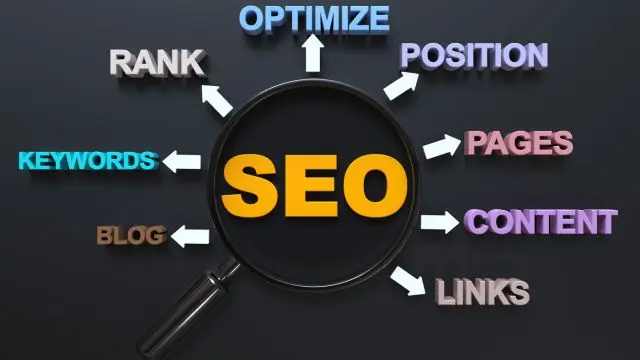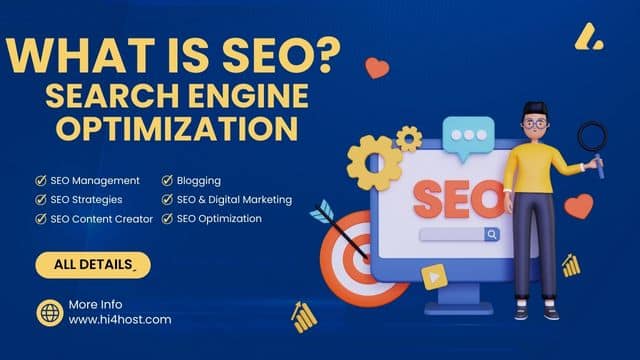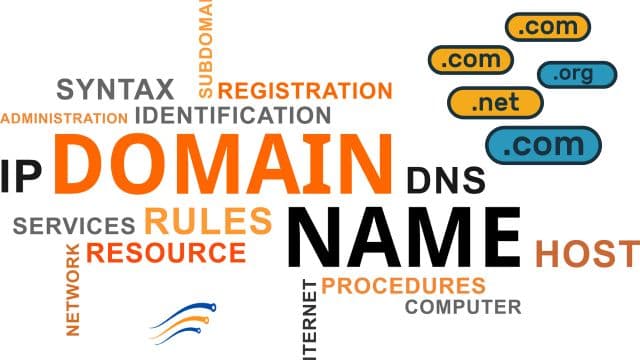In our digitally-driven world, your website acts as the front door to your brand’s online presence, and attracting a vibrant audience through that door is paramount to success. As you navigate the crowded digital marketplace, it’s not just about having a slick website—it’s about magnetizing your target audience with a strategic allure that turns clicks into loyal followers. To attract an audience online effectively, you must ensure that every aspect of your digital presence, from your website design to your content and marketing strategies, is aligned with the interests and needs of your target audience, thereby transforming casual visitors into dedicated fans of your brand.
Ways to attract an audience online
Whether you’re a seasoned business owner looking to revamp your online footprint or a fresh entrepreneur eager to make waves, understanding the best ways to captivate and maintain a robust audience is crucial. In this blog post, we’ll unveil proven strategies that will help your website stand out in a sea of competition, engage visitors with compelling content, and turn passive browsers into active participants. Stay with us as we guide you through the essential steps to elevate your online appeal and transform your website into an audience attraction powerhouse.

A. The Importance of an Online Presence
Having a strong online presence is crucial for any website looking to attract an audience. In today’s digital age, more and more consumers are turning to the internet to find information, products, and services. Without a solid online presence, your website may struggle to reach potential customers and stand out from the competition.
By investing in building a robust online presence, you can increase your website’s visibility and credibility among your target audience. This can be achieved through various online marketing strategies such as search engine optimization (SEO), social media marketing, and content marketing. With a strong online presence, you can drive traffic to your website, engage with your audience, and ultimately convert visitors into loyal customers. In an increasingly competitive online landscape, having a solid online presence is essential for the success of any website.
B. Overview of Strategies to Attract an Online Audience
An effective online presence begins with a solid strategy to attract an audience to your website. Before diving into specific tactics, it is essential to have a clear overview of the strategies that will help you reach and engage your target audience. One of the key components of this overview is understanding your audience’s demographics, preferences, and behavior online. By conducting thorough research and analysis, you can tailor your content and marketing efforts to resonate with your target audience effectively.
Additionally, establishing a strong brand identity and positioning yourself as an authority in your industry are crucial steps in attracting an online audience. Consistent branding across all platforms and channels will help you build recognition and credibility with your audience. By creating valuable and informative content that addresses your audience’s needs and interests, you can position yourself as a trusted source of information and attract a loyal following. In the next sections, we will delve deeper into specific strategies and tactics to help you effectively attract and engage an online audience through your website.
I. Developing Engaging Content

Developing engaging content refers to the process of creating and curating material that captures the interest and attention of a target audience. This involves crafting content that is not only informative and relevant but also entertaining, interactive, and visually appealing. The goal is to provide value to the audience, encourage interaction, and ultimately drive desired actions, such as sharing, commenting, or making a purchase. Engaging content can take various forms, including articles, videos, infographics, social media posts, and more, depending on the platform and the preferences of the audience.
A. Understanding Your Target Audience
Understanding your target audience is crucial when it comes to attracting an audience online through your website. By taking the time to analyze the demographics, interests, and behavior of your target audience, you can tailor your content and messaging to better resonate with them. This can lead to increased engagement, higher conversion rates, and ultimately, a more successful online presence.
To effectively understand your target audience, it is important to conduct thorough market research and gather data on their preferences and habits. This can involve utilizing tools such as Google Analytics to track website traffic, conducting surveys to gather feedback, and monitoring social media analytics to see what types of content resonate most with your audience. By taking the time to truly understand who your audience is and what they are looking for, you can create a website that caters to their needs and interests, ultimately leading to a more engaged and loyal following.
B. Using Multimedia Elements to Enhance Engagement
Using multimedia elements on your website is a powerful way to enhance engagement and attract a larger audience. Visual content such as images, videos, and interactive graphics can create a more immersive and dynamic experience for your visitors. Studies have shown that websites with multimedia elements tend to have higher retention rates and lower bounce rates, as users are more likely to stay engaged and explore the site further.
When incorporating multimedia elements into your website, it is important to consider the quality and relevance of the content. High-resolution images and videos that are clear and visually appealing can significantly enhance the user experience. Additionally, using interactive elements such as sliders, galleries, and animations can make your website more engaging and encourage visitors to interact with your content. By strategically utilizing multimedia elements, you can effectively capture and hold the attention of your audience, leading to increased traffic and a more successful online presence.
C. Crafting Compelling Headlines and Copy
Crafting compelling headlines and copy is crucial when it comes to attracting an audience to your website. Your headlines are often the first thing a visitor will see, so they need to be attention-grabbing and enticing. A strong headline should be concise, and clear, and promise a benefit to the reader. It should also be specific and convey a sense of urgency to encourage the reader to click through and explore further.
In addition to your headlines, your website copy plays a vital role in capturing the attention of your audience. Your copy should be well-written, engaging, and tailored to your target audience’s needs and interests. Use persuasive language to highlight the benefits of your products or services, and make sure your content is easy to read and navigate. By crafting compelling headlines and copy, you can increase the likelihood of attracting and retaining a loyal online audience.
Read More: Web Hosting Guide – How to Choose a Web Host
II. Website Design and User Experience

Developing engaging content involves creating and curating material that captures the interest and attention of a target audience, encourages interaction, and drives desired actions, such as sharing, commenting, or making a purchase.
Website design and user experience refer to the process of creating and organizing a website’s layout, visual elements, and navigation in a way that is aesthetically pleasing and easy for users to interact with, ultimately enhancing their overall experience and satisfaction with the site.
A. Navigation and Layout Best Practices
When it comes to attracting an audience to your website, one crucial factor to consider is your navigation and layout. A well-designed website with intuitive navigation can make a significant impact on user experience and ultimately determine whether visitors stay on your site or abandon it. To optimize your website’s navigation, it is essential to keep it simple and user-friendly. This means using clear and concise menu labels, logical organization of information, and easy access to key pages. Additionally, incorporating a search bar can help users quickly find what they are looking for, improving overall usability.
In terms of layout best practices, it is important to focus on readability and visual appeal. Choose a clean and professional design that complements your brand’s aesthetic while ensuring that the text is easily scannable and legible. Utilize whitespace effectively to create a sense of balance and sophistication, and consider incorporating visual elements such as images and graphics to enhance the overall look of your website. By paying attention to these navigation and layout best practices, you can create a website that not only attracts an audience but keeps them engaged and coming back for more.
B. Mobile Responsiveness and Cross-Platform Compatibility
Mobile Responsiveness and Cross-Platform Compatibility are key elements to consider when building a website that aims to attract and retain an online audience. In today’s digital age, the majority of internet users access websites through their smartphones and tablets. It is crucial for websites to be designed with mobile responsiveness in mind, ensuring that the site displays properly and functions seamlessly on smaller screens. A website that is not mobile responsive may lead to a frustrating user experience, resulting in high bounce rates and lost potential customers.
Furthermore, cross-platform compatibility is essential as users access websites through a variety of devices and browsers. A website that is compatible with different platforms and browsers ensures that all visitors have a consistent and user-friendly experience. By optimizing your website for both mobile responsiveness and cross-platform compatibility, you can increase the reach and accessibility of your site, ultimately attracting a larger audience and driving more traffic to your website.
C. Color Theory and Visual Appeal
Color theory and visual appeal play a crucial role in attracting an online audience to your website. The colors you choose for your website can evoke certain emotions and feelings in your visitors, ultimately influencing their perception of your brand. Understanding the psychology behind colors can help you create a visually appealing website that not only captures attention but also resonates with your target audience.
When selecting colors for your website, it is important to consider the psychological impact of each color. For example, blue is often associated with trust and professionalism, making it a popular choice for corporate websites. On the other hand, red can evoke feelings of passion and excitement, making it suitable for websites that want to create a sense of urgency or action. By carefully selecting colors that align with your brand and target audience, you can create a visually appealing website that effectively captures the attention of online visitors.
III. Search Engine Optimization (SEO)

Search Engine Optimization (SEO) is the practice of optimizing a website’s content and structure to improve its visibility and ranking in search engine results pages (SERPs), with the goal of attracting more organic (non-paid) traffic to the site.
A. Keyword Research and Implementation
Keyword research and implementation is a crucial component of any successful online marketing strategy. Without understanding the specific keywords that your target audience is using to search for content related to your industry or niche, it can be difficult to attract the right visitors to your website. Conducting in-depth keyword research allows you to identify which keywords have the highest search volume and competition, helping you prioritize your efforts and focus on the terms that will yield the best results.
Once you have identified the most relevant keywords for your website, it is important to strategically implement them into your content. This includes optimizing your website’s title tags, meta descriptions, headers, and body content to incorporate these keywords in a natural and organic way. By aligning your content with the language and terms that your target audience is using, you can improve your website’s visibility in search engine results pages and attract a larger audience of potential customers.
B. On-Page SEO Techniques
One of the most crucial aspects of optimizing your website to attract an online audience is implementing effective on-page SEO techniques. On-page SEO involves optimizing various elements on your website to improve its search engine ranking and visibility to potential viewers. This includes incorporating relevant keywords strategically throughout your content, ensuring proper meta tags and descriptions are in place, and optimizing your website’s loading speed and mobile-friendliness.
Furthermore, on-page SEO techniques also involve creating high-quality, engaging content that is valuable to your target audience. This includes writing informative blog posts, creating visually appealing images and videos, and utilizing internal linking to guide users through your website. By focusing on these on-page SEO techniques, you can significantly increase your website’s visibility and attract a larger online audience, ultimately driving more traffic and potential customers to your site.
C. Off-Page SEO Strategies
Off-page SEO strategies are essential for driving traffic to your website and increasing your online visibility. One of the most effective techniques in this category is link building. By obtaining high-quality backlinks from reputable websites, you can improve your site’s credibility in the eyes of search engines like Google. This, in turn, can help boost your website’s ranking in search engine results pages (SERPs) and attract more organic traffic.
Social media marketing is another key off-page SEO strategy that can help you attract an audience online. By promoting your website and content on platforms like Facebook, Twitter, Instagram, and LinkedIn, you can reach a larger audience and drive more visitors to your site. Engaging with your followers, sharing valuable content, and participating in online communities can all contribute to building brand awareness and increasing traffic to your website. When done correctly, social media marketing can have a significant impact on your website’s SEO performance and overall online presence.
IV. Leveraging Social Media

Leveraging social media involves using social networking platforms strategically to enhance brand visibility, engage with target audiences, drive traffic to a website, and achieve specific marketing or business objectives.
A. Building a Social Media Presence
Building a strong social media presence is one of the most effective ways to attract an audience to your website. By utilizing platforms like Facebook, Instagram, Twitter, and LinkedIn, you can reach a wider audience and promote your content to a targeted group of individuals. Start by creating engaging and shareable content that resonates with your target audience. This can include articles, videos, infographics, and interactive posts that encourage followers to like, comment, and share your content with their network.
Consistent posting and engagement with your followers are key components of building a successful social media presence. Establish a posting schedule that works for your audience and stick to it to maintain a regular presence on social media. Interact with your followers by responding to comments, messages, and mentions to show that you value their input and appreciate their support. By building a strong social media presence, you can drive more traffic to your website and increase your online visibility.
B. Social Media Advertising
Social media advertising is a powerful tool for attracting an audience to your website. With the ability to target specific demographics, interests, and behaviors, social media platforms such as Facebook, Instagram, and Twitter allow you to reach potential customers who are most likely to be interested in your products or services. By creating targeted ads that are visually appealing and engaging, you can capture the attention of users as they scroll through their feeds.
To effectively attract an audience through social media advertising, it is essential to have a clear understanding of your target audience and tailor your ads to resonate with their interests and needs. Utilize compelling visuals, concise copy, and a strong call-to-action to drive users to click through to your website. Additionally, regularly monitoring and analyzing the performance of your ads can help you refine your strategy and optimize your campaigns for maximum impact. By leveraging the power of social media advertising, you can effectively attract an audience to your website and ultimately drive conversions and sales.
C. Engaging with the Audience on Social Platforms
Social media advertising is a powerful tool for attracting an audience to your website. With the ability to target specific demographics, interests, and behaviors, social media platforms such as Facebook, Instagram, and Twitter allow you to reach potential customers who are most likely to be interested in your products or services. By creating targeted ads that are visually appealing and engaging, you can capture the attention of users as they scroll through their feeds.
To effectively attract an audience through social media advertising, it is essential to have a clear understanding of your target audience and tailor your ads to resonate with their interests and needs. Utilize compelling visuals, concise copy, and a strong call-to-action to drive users to click through to your website. Additionally, regularly monitoring and analyzing the performance of your ads can help you refine your strategy and optimize your campaigns for maximum impact. By leveraging the power of social media advertising, you can effectively attract an audience to your website and ultimately drive conversions and sales.
V. Email Marketing

Email marketing is the practice of sending targeted, personalized messages to a group of subscribers via email, with the aim of promoting products, services, or content, building customer relationships, and achieving specific marketing or business goals.
A. Creating a Strong Email List
Creating a strong email list is essential for attracting and retaining an audience to your website. By collecting the email addresses of your visitors, you can stay connected with them and send them targeted content that will keep them engaged. One of the best ways to build your email list is by offering a valuable incentive, such as a free ebook, whitepaper, or exclusive discounts. Make sure to prominently feature your email sign-up form on your website so that visitors can easily subscribe.
In addition, it’s important to personalize your emails and segment your list based on the interests and preferences of your subscribers. By sending relevant content to the right audience, you can increase open rates and click-through rates, leading to higher conversion rates. Regularly sending out newsletters, updates, and promotions will keep your audience informed and interested in what you have to offer, ultimately driving more traffic to your website and increasing engagement.
B. Crafting Effective Email Campaigns
Crafting effective email campaigns is crucial when it comes to attracting an audience online through your website. Before diving into the content of your emails, it is essential to first establish your email list. Building a quality email list can be done through various methods such as offering incentives for sign-ups, hosting webinars or events, and utilizing social media platforms to promote subscription to your newsletter.
Once you have a solid email list in place, the key to crafting effective email campaigns lies in creating compelling and engaging content. Personalizing emails based on your audience’s preferences and behaviors can significantly increase open and click-through rates. Additionally, utilizing eye-catching subject lines, concise yet impactful copy, and strategic placement of call-to-action buttons can further enhance the effectiveness of your email campaigns. By consistently delivering valuable content to your subscribers, you can build trust and loyalty, ultimately attracting and retaining a dedicated audience to your website.
C. Measuring Email Marketing Effectiveness
Measuring Email Marketing Effectiveness is crucial for any online business looking to attract and retain customers through their website. By tracking key metrics such as open rates, click-through rates, conversion rates, and unsubscribe rates, businesses can gain valuable insights into the performance of their email campaigns. Analyzing these metrics allows businesses to understand what is resonating with their audience and what may need to be adjusted to improve engagement and conversions.
In addition to tracking these key metrics, businesses can also use A/B testing to experiment with different subject lines, email copy, and calls to action to see what resonates best with their audience. By testing and analyzing the results of these experiments, businesses can continuously optimize their email campaigns to drive better results and ultimately attract a larger audience to their website. With a focus on measuring email marketing effectiveness, businesses can better understand and connect with their audience, ultimately leading to increased customer engagement and loyalty.
VI. Paid Advertising and Retargeting

Paid advertising and retargeting involve using paid online advertising channels to display ads to a targeted audience, and retargeting specifically refers to showing ads to users who have previously interacted with a website or online content, with the goal of increasing brand awareness, driving traffic, and boosting conversions.
A. Understanding Paid Advertising Platforms
Understanding Paid Advertising Platforms is crucial for attracting a larger audience to your website. These platforms offer a variety of options for showcasing your products or services to a targeted audience. By utilizing platforms such as Google Ads, Facebook Ads, and Instagram Ads, you can reach potential customers through highly targeted campaigns based on demographics, interests, and online behavior.
Paid advertising platforms provide valuable insights into the effectiveness of your ads through metrics such as click-through rates, conversions, and return on investment. By analyzing this data, you can optimize your campaigns to maximize results and attract a larger audience to your website. Additionally, these platforms offer advanced targeting features, retargeting options, and custom audience creation tools to help you reach your ideal audience and achieve your business goals. Mastering the use of paid advertising platforms is essential for successfully attracting and engaging an online audience.
B. Crafting Targeted Ad Campaigns
Crafting targeted ad campaigns is a crucial aspect of attracting an audience online through your website. By identifying and understanding your target audience, you can create ads that are tailored to their specific needs and interests. This involves conducting thorough research to pinpoint the demographics, interests, and behaviors of your ideal customers. Utilizing tools such as Google Ads, Facebook Ads, and other platforms can help you reach this audience with precision.
In addition to demographics, targeting based on location, interests, and online behaviors can help you maximize the effectiveness of your ad campaigns. By crafting ads that speak directly to the wants and needs of your target audience, you can increase the likelihood of engagement and conversions. It is essential to continuously analyze and optimize your campaigns to ensure they are resonating with your audience and driving the desired results. By investing time and resources into crafting targeted ad campaigns, you can effectively attract and engage a loyal audience to your website.
C. Implementing Retargeting Strategies to Capture Leads
Implementing retargeting strategies is a powerful tool for capturing leads and engaging with potential customers who have already shown interest in your website. By strategically placing cookies on users’ browsers after they have visited your site, you can target them with personalized ads as they browse the internet. This helps keep your brand top of mind and encourages them to return to your site and complete a desired action, such as making a purchase or signing up for a newsletter.
To effectively implement retargeting strategies, it is important to segment your audience based on their past behavior on your site. This allows you to tailor your retargeting ads to specific groups of users, increasing the likelihood of conversion. Additionally, consider offering special promotions or discounts to entice users to return to your site. By constantly analyzing and optimizing your retargeting campaigns, you can maximize your chances of capturing leads and driving sales through your website.
VII. Analytics and Continuous Improvement

Analytics and continuous improvement refer to the process of using data analysis tools to measure and evaluate the performance of digital marketing campaigns and website metrics, with the aim of identifying areas for optimization and making informed decisions to enhance overall effectiveness and achieve better results over time.
A. Setting Up and Understanding Analytics
When it comes to attracting an audience online through your website, setting up and understanding analytics is crucial. Analytics provide valuable insights into your website’s performance, user behavior, and audience demographics. By analyzing this data, you can make informed decisions to optimize your website for better engagement and conversions.
To get started, it is essential to set up a web analytics tool such as Google Analytics. This free tool provides comprehensive data on website traffic, page views, bounce rates, and more. By tracking these metrics, you can identify which pages are performing well and which areas need improvement. Understanding these analytics will help you tailor your content and marketing strategies to better resonate with your target audience, ultimately leading to increased traffic and engagement on your website.
B. Interpreting Data for Audience Insights
Interpreting data for audience insights is a crucial aspect of attracting and engaging an audience online through your website. By analyzing the data collected from various sources such as website analytics, social media metrics, and email marketing reports, you can gain valuable insights into the behavior, preferences, and demographics of your audience. This data can help you tailor your content and messaging to better meet the needs and interests of your target audience, ultimately driving higher engagement and conversions.
Some key metrics to look for when interpreting data for audience insights include website traffic patterns, user engagement levels, click-through rates, bounce rates, and demographic information. By tracking and analyzing these metrics regularly, you can identify trends, patterns, and areas for improvement in your online presence. Additionally, tools like Google Analytics and social media analytics platforms can provide detailed reports and visualizations to help you make informed decisions about your marketing strategies. By understanding your audience through data analysis, you can create targeted and personalized content that resonates with your audience and keeps them coming back for more.
C. A/B Testing and Website Optimization
A/B testing and website optimization are essential tools for any website looking to attract and retain an audience online. A/B testing involves comparing two versions of a web page to see which one performs better in terms of user engagement and conversion rates. By experimenting with different layouts, visuals, and calls to action, website owners can optimize their sites to better meet the needs and preferences of their target audience.
Website optimization goes hand in hand with A/B testing, as it involves continuously analyzing and improving various aspects of a website to enhance its performance and usability. This can include optimizing website speed, improving navigation and user experience, and refining SEO strategies to drive more organic traffic. By adopting a data-driven approach and utilizing tools like Google Analytics, website owners can gain valuable insights into their audience’s behavior and preferences, allowing them to make informed decisions to attract and retain a larger online following.
Read More: Discover the Best WordPress Hosting for Bloggers in 2024
Conclusion
In conclusion, igniting the potential of your website in today’s digital bazaar requires a nuanced blueprint that intertwines compelling content with an impeccable user experience. By applying the key strategies discussed – from understanding the intricate dance of SEO to the powerful ripple effect of social media influence, the precision of targeted email campaigns, and the magnetism of captivating website design – you have the tools to not only attract but also to enchant a loyal audience, turning fleeting visitors into longstanding devotees of your brand.
Remember, the journey of audience engagement and growth is perpetual, demanding constant adaptation and refinement to keep pace with the ever-evolving digital landscape. Now, armed with insight and strategy, it’s time to take that pivotal step toward achieving your website’s true potential. So, rally your ambition, harness these proven tactics, and watch as your online presence flourishes into an audience attraction powerhouse. Ready to propel your website to stellar heights? Reach out to us today, and let’s chart your course to digital triumph together!
FAQs
Some of the best ways to increase traffic to your website include optimizing for search engines (SEO), creating high-quality content, utilizing social media, and engaging with your audience through email marketing.
Content is crucial for attracting an audience online. High-quality, valuable content can help you establish authority in your niche, attract organic traffic from search engines, and keep your audience engaged and coming back for more.
Some effective strategies for engaging with your audience online include responding to comments and messages, hosting live Q&A sessions or webinars, sharing user-generated content, and offering valuable resources or incentives for engagement
You can track the effectiveness of your online marketing efforts by using web analytics tools like Google Analytics. These tools can provide insights into your website traffic, user behavior, and conversion rates, allowing you to make data-driven decisions to improve your marketing strategies.
Some common mistakes to avoid when trying to attract an audience online include neglecting SEO, creating low-quality content, being too promotional, and not engaging with your audience authentically.
**************************************



